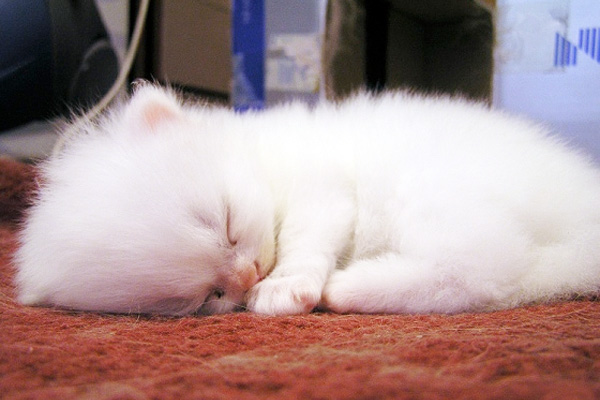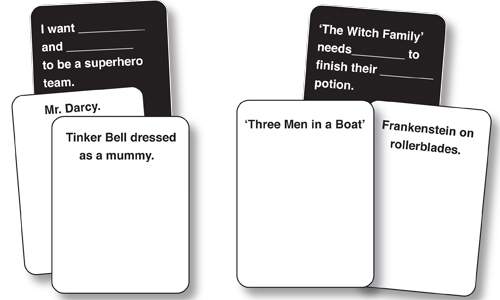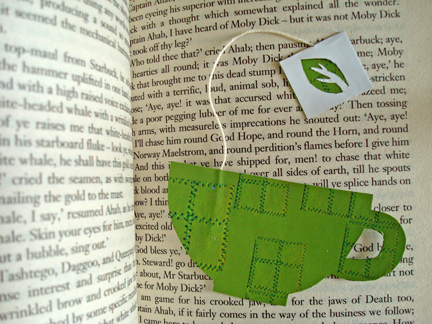How-To Tuesday: Crafting DIY Book-Inspired Cards
It's Letter Writing Week! There’s something oddly satisfying about getting handwritten notes and letters that electronic mail just can’t convey. Don’t get me wrong, I, like most people my age, like Twitter, Facebook, Instagram, Gmail and the ilk but there are times where the virtual emojis and letters just don’t cut it.
The weight of the paper, the way people write their letters and even the stamps that people choose all tell stories. What better way to tell a story than create book-inspired cards? They’re conversation starters and a great way to connect with people.

A few basic supplies you’ll need:
- Cardstock (I tend to buy them in neutral-colored packs and then buy colors that I don’t have individually. Scrapbook and construction paper are okay, too.)
- Scissors (not pictured)
- Glue stick
- Pencil and eraser
- Paper cutter (Optional)
- X-acto knife (pictured here is a crafter’s all-in-one tool; Optional)
- Cutting board (Optional; can be substituted with any thick cardboard; not pictured)
- Thin-tipped markers (Not pictured)
Find a book cover that you like. Some tips include:
- Keep it simple (the more complex, the more the nightmare of recreating it)
- The more graphic and less photography, the easier it is.
Some general cover recreation tips include:
- It’s okay if the paper colors don’t necessarily match up with the cover colors.
- Lay everything out and glue everything at the very end. Sometimes when all the pieces come together, something looks off and it’s much easier to fix it when things aren’t glued down.
- For tiny details, it’s much easier to use a X-acto knife and a cutting board to protect the surface you’re working on than a pair of scissors.
- When you’re making it, it’s a good idea to have the cover of the book next to your work area so you can go back and reference it. n
For this tutorial, I’ve decided to recreate the Penguin Classics cover.
Penguin Classics
I love Penguin classics covers and luckily, they’re simple, which means that they’re easy to make. There’s also a lot of latitude with what specific classic cover you want to make. I like Pride and Prejudice so I’ll be making that one.
This tutorial will make 5”x7” card, which fits into an A7 card envelope. A 12×12” piece of orange scrapbook paper (or cardstock) will be needed. It’s available in any craft store in the scrapbook paper section.

1. Cut and fold a card that measures 5×7”. Trim edges with a paper cutter, if needed.
2. Measure a rectangle that’s 5in by 2.5 in on a cream-colored piece of paper. Glue this about 1/2 of the way down. The bottom orange piece should look slightly larger than the top orange piece.

3. Free hand the top shape on the Penguin Classics on a piece of cream paper. Cut the shape out and trace the piece onto a piece of black paper. Draw the same shape but slightly larger, using the smaller shape as reference. Cut it out.
4. Using the penguin on the cover as reference, freehand a penguin shape onto black paper. If needed, print out a Penguin Classics cover and cut out the penguin to use it as a tracer. Once traced, cut out the black penguin shape.
5. Trace the black penguin onto a piece of cream-colored paper. Draw the stomach, white bands near the neck and eye. At this point, it be easier to cut out the white pieces with an X-acto knife and cutting board.

6. Lay all your pieces onto the card and assemble. Glue the pieces down if you’re happy with the result.
7. Using a fine tipped black marker, write the name, author and the words, “Penguin Classics” in a font that’s most similar to the original cover. It’s easier to do this if you have the Penguin Classics cover next to your card, either printed or on a computer.
8. Using a fine-tipped orange marker and a ruler, draw a thin line between the title and the author.

9. Viola! You’re done.

Jessica Yang
Jessica hails from California, where she grew up with a boba in one hand and many, many library books in the other. Once upon a time, she wrote puns for money in the mobile games space. When not taking #aesthetic photos for book blogging purposes, she can be found cultivating bok choy and baking bread with limited success.



